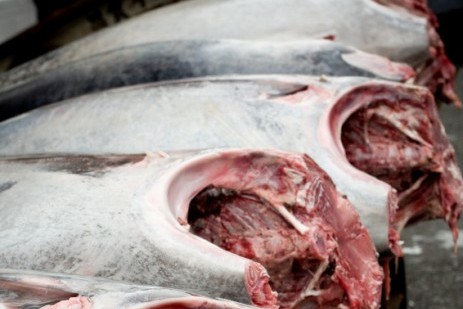In Chapter 1 of Plan B 4.0: Mobilizing to Save Civilization, I underscore important indicators of global stability and resource consumption. The following are summaries of key datasets that inform these discussions.
Each year, the Fund for Peace and Foreign Policy magazine rank 60 “failing states,” countries which on some level fail to provide personal security or basic services, such as education, health care, food, and physical infrastructure, to their people. The countries are evaluated using the Failed States Index, a ten-point scale for each of twelve political, social, economic, and military indicators (i.e., a state that is failing completely receives a score of 120).
(Graph on Top 20 Failing States, 2008)
Failing states have much in common. Seventeen of the top twenty have high population growth rates (several close to 3 percent per year or twenty-fold per century); these countries have seen enough development to reduce mortality but not fertility. In fact, birth rates in five of these seventeen states exceed six children per woman. Soaring population growth puts strain on educational facilities, as well as food and water supplies. It is perhaps unsurprising, then, that almost half of the top twenty failing states depend on food from the U.N. World Food Programme or that in fourteen of them, at least 40 percent of the population is under fifteen.
As breeding grounds for conflict, terrorism, drugs, and infectious disease, failing states represent a threat to global order and stability. In 2004, only seven countries had scores of 100 or greater. In just four years, the number of states in this category doubled.
Another concern addressed in Plan B 4.0 is how the growing consumption of the earth’s resources is clearly unsustainable. Examining commodity consumption in merely two countries, the United States and China, makes this point.
China now consumes more grain than the United States. It consumes almost twice as much meat, roughly three times as much coal, and nearly four times as much steel. But what would happen if China’s 1.3 billion people were to consume commodities at the same rate as the United States’ 300 million?
For this exercise, we look at how an 8 percent annual economic growth rate in China (a conservative projection) would put per capita income in China at U.S. levels by 2024.
At that point, if each person in China were to consume paper at the current American rate, China would need more paper than is produced worldwide today (there go the world’s forests). China would require over half of the current world grain supply. China would also need 90 million barrels of oil per day; however, the world currently produces less than 86 million and is unlikely to produce much more than that in the future.
(Graph on Current World Consumption of Key Resources Compared with 2024 Projections for China)
These projections serve not to blame China for its consumption but rather to illustrate that the western economic model — with meat-rich diets, fossil-fuel powered utilities, and automobile-dependent transportation — will not work on a global scale because there are simply not enough resources. Plan B puts us on a path toward a new kind of global economy, one that is powered largely by renewable sources of energy, that has a much more diversified transport system, and that reuses and recycles everything.



